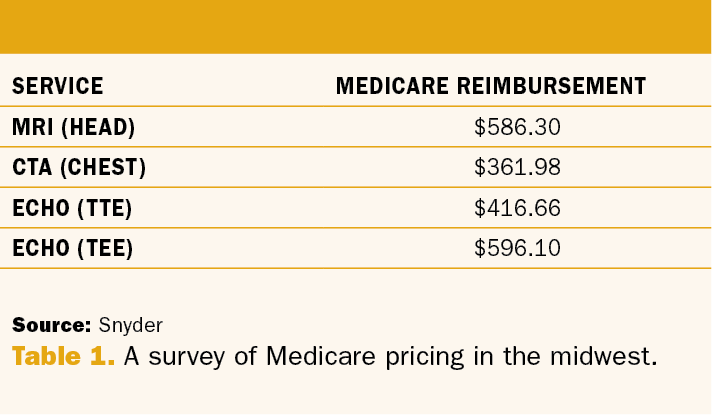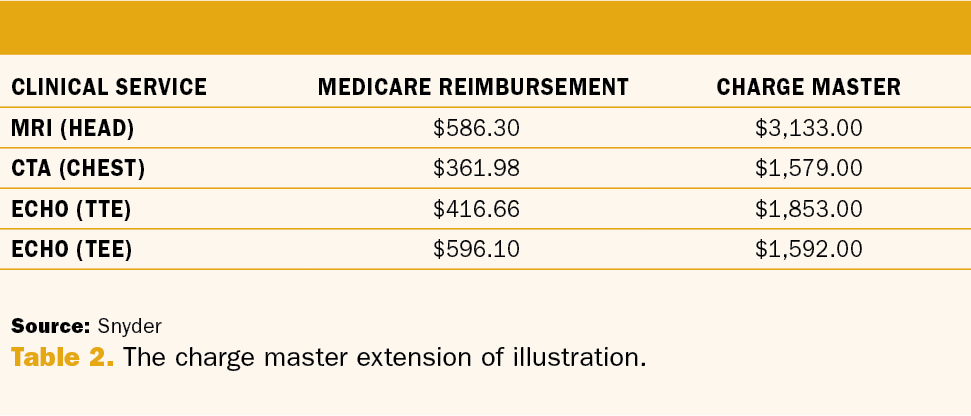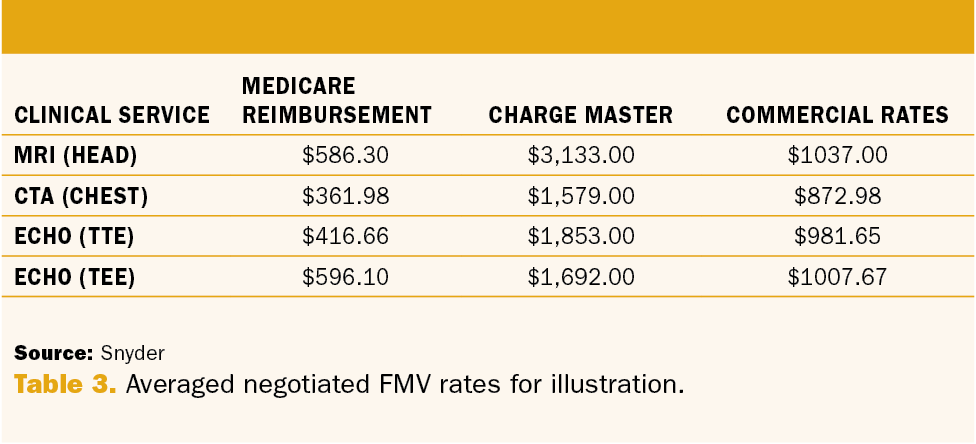Fair Market Value Conundrum: Solutions for Sponsors and Sites
Clinical trial budget development continues to frustrate industry sponsors and investigative sites.

Clinical trial budget development continues to frustrate industry sponsors and investigative sites. While private practice investigators may approve a study budget in 1.5 months, sites at academic medical centers need three months to complete this activity and hospital systems may require up to six months to conclude these sensitive budget negotiations.1 Nearly 50% of sites report feelings of fear or suspicion when working with sponsors on budget development. It is not a surprise that contract and budget negotiations represent the most significant delay to study start-up project schedules.1
Budget development has been a challenging task to both sites and sponsors for decades. Through articles, conferences, and various educational opportunities, the industry has improved cost identification and overall negotiation workflows. Sponsors have made important advances in understanding site resource costs, study start up fees and overhead expenses. Unfortunately, sponsors and sites continue to wrestle with understanding the fair market value (FMV) of medical services. Confusion is widespread over the definition of FMV, with many sites and sponsors struggling to correctly apply the concept when developing a study budget. The purpose of this article is to decipher the regulations on FMV and provide realistic solutions to this conundrum for those conducting clinical research.
Fair market value framework
The relevance of FMV in clinical research can be traced back to landmark regulation published by the Office of Inspector General (OIG) in 2003 titled “OIG Compliance Program Guidance for Pharmaceutical Manufacturers.”2 In the Research Funding section of the document, the OIG regulation stipulates, “Payments for Research Services should be fair market value for legitimate, reasonable and necessary services.” Unfortunately, the OIG does not provide any further clarification concerning the definition of FMV. Without additional guidance, both site and sponsors have created erroneous FMV interpretations and budget development practices. An elucidation of FMV begins with examining the finance and accounting standards from which the concept originated.
For nearly 120 years, the business community has had a single definition of FMV: “Fair Market Value is defined as the price for which property would exchange between a willing buyer and a willing seller, each having reasonable knowledge of all relevant facts.”3 In rulemaking, the Centers for Medicare and Medicare Services (CMS) defines market value as “the value in arm’s length transactions, consistent with the price an asset would bring as the result of bona fide bargaining between well-informed buyers and sellers who are not otherwise in a position to generate business for the other party.”4
For clinical research purposes, the exchange of property or asset is exemplified by the financial purchase of a medical service as required in the study protocol. The finance and CMS FMV definitions are straightforward and only specify a few requirements that apply in the context of research, to summarize:
- Willing buyer negotiating the purchase price with a willing seller
- Well-informed buyers with reasonable knowledge of all important facts
Armed with the understanding of these basic criteria, how do industry sponsors and investigative sites define FMV? How do both parties place a dollar value on the clinical services required in the study protocol? To illustrate these FMV practices, this article will cite the following diagnostic services that are frequently included in research protocols: MRI (head), CTA (chest), transthoracic echocardiogram (TTE), and transesophageal Echocardiogram (TEE).
(Note: Many standard-of-care and other clinically relevant medical services in a research protocol can, and should, be billed to the patient’s third-party medical insurance. It is not within the scope of this article to review the established CMS billing and coverage regulations. This article is focused on the pricing of medical services that both sites and sponsors agree cannot be billed to a patient’s medical insurance).
Sponsors and FMV
Industry sponsors are increasingly aware of the legal concerns related to the development of clinical trial budgets. Pharmaceutical, medical device, and diagnostic companies are required to comply with the FMV stipulations, but the federal regulators do not provide advice on the determination of FMV for medical services. This places sponsors in an ill-defined situation fraught with potential legal and financial risk.
Sponsors that elect to disregard the federal FMV regulations may suffer harsh penalties. In May 2008, Biovail pleaded guilty to conspiracy and Anti-Kickback Statute charges and agreed to pay a criminal fine of more than $24 million for allegedly conducting a sham study involving Cardizem. The study paid physicians up to $1,000 per patient if they enrolled 11-15 patients in the trial, which involved prescribing Cardizem. The prescribing physicians conducted three regularly scheduled visits for each enrolled patient, which involved no additional work for the physicians. The payments exceeded the reasonable FMV of the physicians’ time necessary to enroll the patients and complete the questionnaires.5 The legal penalties in this real-world case were focused on unfair incentivizing of physicians; however, FMV concerns were addressed in the final settlement.
Industry sponsors are cognizant of the regulations and strive to follow published FMV requirements. In order to remain compliant with the regulations, many sponsors desire documentation to support the pricing of medical services in a clinical study budget. Unfortunately, most sponsors do not have access to realistic FMV pricing information. The lack of real pricing information commonly results in sponsors’ frequently employing two inaccurate pricing strategies—Medicare pricing and benchmark pricing.
Research sponsors have historically utilized Medicare pricing in clinical trial budgets. The Medicare pricing strategy has a significant benefit because Medicare pricing for clinical services is well-documented and publicly available. Sponsors can completely mitigate the FMV legal risk by proposing Medicare pricing. Unfortunately, hospital and clinic administrators will quickly report that Medicare rates are significantly below FMV. For this reason, surveys indicate that about 17% of all doctors nationally are refusing to treat new Medicare patients6 and accept the below-FMV reimbursement.
Healthcare institutions understand that Medicare pricing does not fall within the FMV definition of “reasonable.” Moreover, the Medicare pricing strategy for clinical services in a research protocol does not follow the definition of fair market value. A primary tenet of FMV is a “willing buyer negotiating the purchase price with a willing seller.” CMS coordinates the reimbursement rates on a national level. The agency creates and publishes the prices for medical services; the providers of these services are not provided with an opportunity to negotiate. In short, Medicare rates do not comply with the FMV regulations. To support an illustration of this concept, a survey of Medicare pricing in the Midwest is included in Table 1.

Sponsors have heard about the inaccuracies associated with using Medicare pricing from astute sites for many years. Unfortunately, industry sponsors do not have many other options for finding documented FMV pricing information. To fill this data void, there are companies that sell comprehensive benchmark pricing for clinical services. However, it should be noted that purchased benchmark data that is marketed as a tool to reduce investigator payments, may not provide locally accurate fair market analyses to sponsors attempting to follow FMV. The rule of thumb would be to examine how old the data is, as well as where the original data came from. The rates could originally have been based on Medicare pricing or well below FMV pricing. Benchmark pricing may represent a helpful reference point when initially developing a study proposal, but cannot be relied upon solely when creating study budgets.
Sites and FMV
While sponsors struggle to find fair market value pricing for medical services, investigators find themselves in a similar situation. Physicians, nurses, and other medical providers are largely removed from the details of healthcare economics. The myriad of medical insurance products, various plans, and confusing billing tactics make it nearly impossible for providers to understand the actual reimbursement for their clinical services. When reviewing a trial protocol and associated budget, research professionals frequently communicate with their billing office about specific procedures and inquire “what do we charge?” Unfortunately, this situation exposes the investigative team to a disconnect between the healthcare institution’s “charge master” and FMV.
In the United States, the charge master is a comprehensive listing of items billable to a patient’s health insurance provider. The charge master has long been a critical element in the coding, billing, and payment process of hospitals and health systems. The charge master includes thousands of hospital services, medical procedures, drugs, supplies, and diagnostic evaluations such as imaging and blood tests. Every hospital maintains its own charge master, but approximately 40% of hospitals pay external companies to help create and adapt their charge masters on a yearly basis.
Charge master coding and pricing rates serve several important functions for the healthcare institution. For example, the coding information in the charge master is used by the payer to adjudicate claims.7 A primary role of the charge master is a starting point for contract negotiations between healthcare institutions and commercial insurance providers. Commercial insurers may negotiate to provide reimbursement as a percentage of the values described in the charge master. A large medical commercial insurer may propose paying 40%-50% of charges; while a smaller workers compensation insurer may reimburse 85% of charges. In these situations, the healthcare institution can be incentivized to keep the rates in the charge master elevated. The healthcare industry understands that a charge master may list high prices that are “devoid of any calculation related to cost.”8
The rates in an institution’s charge master may have been initiated 30 or more years ago, and are no longer intended to represent FMV for medical services. Unfortunately, research sites frequently quote these “charge” rates when negotiating study budgets with sponsors. Investigators utilize charge master information due to the easy availability of this financial data. Sites understand that Medicare and benchmark rates are inadequate, but need to realize that the charge master is not a realistic FMV source of pricing information.
Medicare, benchmark, and charge master data are universally not accurate representations of FMV. The charge master extension of this illustration is included in Table 2.

FMV recommendation
Research sites and sponsors are in mutually difficult situations in their attempts to create FMV rates for medical services. The sources of information and documentation readily available to sponsors and sites do not meet the definition of FMV. The budgeting process would benefit from pricing that meets the FMV criteria. The budget development process would be more effectual if there was a situation in which a willing buyer and willing seller, with reasonable knowledge of the relevant facts, meet to negotiate the purchase price of medical services. Fortunately for sites and sponsors, this process occurs on a regular basis in healthcare institutions. The open market negotiation of pricing for clinical services is a required activity when contracting between healthcare providers and commercial insurers.
Healthcare institutions, including private practice and hospital systems, negotiate with commercial medical insurers on a methodical schedule. Six to eight months prior to the end of the current contract, both parties meet to begin the negotiation process. Hospitals and insurers outline their current financial status and economic challenges and initiate the justification of their pricing proposals. The insurance providers compare and contrast the pricing proposal of the hospital with other local healthcare providers. In turn, the hospital may summarize rate information comparing the negotiating insurer with other commercial payers in their region. The negotiations can include a review of the charge master, Medicare rates, and historical pricing for services at the institution. In the end, the healthcare institution and commercial insurer agree upon an arm’s-length contract for the medical services provided. The signed contract is commonly drafted for 1-3 years, thus, ensuring timely and accurate financial terms.
The negotiation process described between hospitals and commercial insurance payers represents the perfect definition of FMV. There is a willing buyer and willing seller of the services under consideration. Both parties are well informed with reasonable knowledge of the important facts. The FMV pricing rates contained in the signed contracts between commercial insurers and healthcare providers reflects the current market trends, meeting the stipulations included in the federal regulations.
The commercially negotiated rates can be a FMV resource for both sponsors and sites. Average negotiated FMV rates for the illustration have been added to Table 3.

FMV implementation
The primary obstacle in using commercially negotiated rates is the availability of this site-specific cost information. The rates documented in the contract between healthcare institutions and commercial payers are considered confidential and strategic corporate information. This sensitive information will not be found in a publicly available source. A core attribute of FMV reporting is a reasonable level of market efficiency and transparency.9 In order to gain the benefits of FMV commercial rates, sites must conduct an internal rate analysis and prepare the corresponding documentation.
Sites can begin the pricing research project by contacting their internal finance director that manages the charge master or commercial contracts. These financial professionals have immediate access to all current commercial contracts and can provide investigators with pricing information quickly and easily. Sites should request the actual reimbursement terms for all likely ordered medical services. To support an accurate FMV analysis, the sites need to request the rates from 3-5 of the highest volume commercial insurers. In further support of the FMV concept, the top 3-5 insurance products may represent >80% of the non-Medicare business with the healthcare institution. Due to the negotiation techniques and goals with commercial insurers, sites may find variability in the rates between the top commercial insurers. Sites should calculate the average commercial reimbursement and document this pricing as their local FMV rate.
Sponsors do not have access to FMV commercial pricing. Sites should not be frustrated or concerned when initial sponsor budget proposals include below-market pricing for medical services. Instead, sites should embrace this opportunity to partner with sponsors and educate the budgeting professionals about the negotiated rates in their region of the country. Over time, sponsors will collect this information and provide more accurate budget proposals in the future.
During the budget negotiation process, the site should provide their local FMV pricing for each medical service. Sponsors may require additional documentation as proof of the fair market value rate. Sites can describe their FMV rate research process, and provide their research FMV price list. If the sponsor requires additional supporting documentation, sites can have the sponsor’s budget representative speak with the contracting manager. Finally, sites can simply produce a PHI redacted copy of an actual patient reimbursement statement —the very definition of FMV in action.
Conclusion
Industry sponsors and research sites continue to experience exasperation with the research study budget negotiation process. Sites feel that sponsors are proposing inadequate Medicare or Benchmark-based rates for medical services. Sponsors feel that sites are quoting inaccurate charge master-based rates. Both sites and sponsors are required to comply with federal FMV value regulations; neither have efficient access to FMV pricing information.
Healthcare institutions continually negotiate FMV rates for medical services with commercial medical insurance corporations. These arm’s-length contracted values represent the spirit of the fair market value requirements and a financial compromise between Medicare and charge master rates. By using these commercial FMV rates, sites and sponsors can comply with FMV value rates and complete the budget negotiation task more efficiently and effectively.
Andrew Snyder, MBA, FACMPE, PMP, is System Wide Director of Research, HealthEast Care System, email: [email protected].
References
- J. Jones, “Streamlining the Negotiation of Clinical Trial Agreements: A Model to Dramatically Improve the Time to Full Execution of a Contract,” SoCRA Source, May 2009.
- U.S. Department of Health and Human Services, “OIG Compliance Program Guidance for Pharmaceutical Manufacturers,” Federal Register 68(86), 2003.
- A. King, “Determining Fair Value,” Strategic Finance, January 2009.
- D. Melvin, “The Start Fair Market Value, Volume/Value & Commercial Reasonableness Standards” An Outline of CMS and Judicial Interpretation;” referencing 60 FR 41921.
- Health Care Fraud and Abuse: Practical Perspectives: 2nd Edition—2009 Cumulative Supplement, Ch.11.II.A.2.b., p. 436.
- D. Hodberg, “Primary Care Physicians are Leaving Medicare,” The National Center for Public Policy Research.” August 2012.
- D. Abbey, “Designing and Maintaining an Effective Chargemaster,” Healthcare Financial Management, March 2001.
- S. Brill, “Bitter Pill: Why Medical Bills are Killing Us,” Time, February 2013.
- J. Alex Milburn, “The Relationship between Fair Value, Market Value, and Efficient Markets”, AP, Vol 7, No 4, 2008.
Improving Relationships and Diversifying the Site Selection Process
April 17th 2025In this episode of the Applied Clinical Trials Podcast, Liz Beatty, co-founder and chief strategy officer, Inato, discusses a number of topics around site engagement including community-based sites, the role of technology in improving site/sponsor relationships, how increased operational costs are impacting the industry, and more.
Behind the Buzz: Why Clinical Research Leaders Flock to SCOPE Summit
February 7th 2025In this episode, we meet with Micah Lieberman, Executive Conference Director for SCOPE Summit (Summit for Clinical Ops Executives) at Cambridge Innovation Institute. We will dive deep into the critical role of collaboration within the clinical research ecosystem. How do we bring together diverse stakeholders—sponsors, CROs, clinical trial tech innovators, suppliers, patients, sites, advocacy organizations, investors, and non-profits—to share best practices in trial design, program planning, innovation, and clinical operations? We’ll explore why it’s vital for thought leaders to step beyond their own organizations and learn from others, exchanging ideas that drive advancements in clinical research. Additionally, we’ll discuss the pivotal role of scientific conferences like SCOPE Summit in fostering these essential connections and collaborations, helping shape the future of clinical trials. Join us as we uncover how collective wisdom and cross-industry partnerships are transforming the landscape of clinical research.